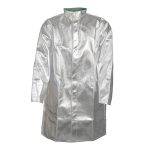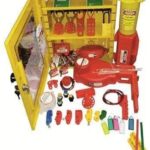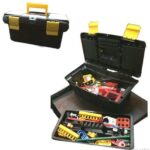Your list is empty, add products to the list to send a request
What Are the Devices for Fire Alarm System?

07
Aug
When it comes to fire safety, detection and early warning can be the difference between a controlled incident and a catastrophic disaster. At the heart of every fire safety setup is a well-planned fire alarm system—a network of devices designed to detect, alert, and sometimes even respond to fire threats before they escalate.
In this blog, you’ll learn what devices are used in a fire alarm system, how they work together, and why modern solutions like the TNA Intelligent Addressable Fire Alarm Control Panel are transforming fire safety across residential, commercial, and industrial buildings.
What Are Fire Alarm Devices?
Fire alarm devices are components used within a fire alarm system to detect fire-related hazards such as smoke, heat, and gas, and to alert occupants through sound or visual signals. These devices work together in real-time to ensure you’re warned as early as possible, giving you and emergency responders the time needed to take action.
5 Essential Devices in a Fire Alarm System
To understand how a fire alarm system functions, you need to look at its core devices. These components are standard across both conventional and addressable systems.
1. Fire Alarm Control Panel (FACP)
The control panel is the command centre of your system. It receives signals from detectors, processes the data, and sends alerts.
Main functions:
- Monitors input from detectors
- Displays alarms or faults
- Sends output signals to notification devices
2. Smoke Detectors
These are among the most common types of detectors. They sense airborne particles created by combustion.
Types include:
- Ionisation smoke detectors (best for fast-flaming fires)
- Photoelectric smoke detectors (ideal for smouldering fires)
- Dual-sensor detectors
3. Heat Detectors
Used in areas where smoke detectors may not be suitable (e.g. kitchens or garages), heat detectors trigger an alarm when a fixed temperature is exceeded or when the temperature rises rapidly.
Types:
- Fixed temperature
- Rate-of-rise detectors
4. Manual Call Points (Break Glass Units)
Allow occupants to manually trigger the fire alarm system by breaking a glass panel and pressing a button. Useful in areas where a person sees a fire before the detectors do.
5. Notification Devices (Sounders & Flashers)
These devices are responsible for making noise or emitting flashing lights to alert occupants of a fire hazard.
Examples include:
- Sirens
- Horns
- Bells
- Strobe lights
- Voice evacuation systems
Additional Devices in a Fire Alarm System
Depending on your building’s needs, a fire alarm system may include additional components:
Gas Leak Detectors
Useful in buildings with LPG or natural gas installations. Detect the presence of combustible gases.
Beam Detectors
Used in large, open areas like warehouses. They detect smoke across long distances using infrared beams.
Flame Detectors
Detect infrared or ultraviolet radiation produced by open flames. Often used in high-risk areas like refineries or chemical plants.
Control Relays
Allow the system to control third-party equipment, such as elevator shutdowns or HVAC systems.
Emergency Voice Communication Systems
Used in large or multi-storey buildings to guide occupants through audio instructions during evacuation.
Types of Fire Alarm Systems
Before installing devices, it’s important to know the two major categories of fire alarm systems.
1. Conventional Fire Alarm Systems
Each device is connected in a zone, and the control panel shows only the zone in which the alarm occurred—not the exact device.
Best for:
- Small buildings
- Cost-conscious installations
2. Addressable Fire Alarm Systems
Each device has a unique digital address. The control panel identifies exactly which device was triggered.
Advantages:
- Precise detection
- Lower maintenance
- Custom alerts
- Digital record logs
How These Devices Work Together
Here’s a simplified look at how a typical fire alarm system functions in real-time:
- Detection
A smoke detector senses particles or a heat detector picks up a temperature rise. - Signal Transmission
The detector sends a signal to the control panel. - Processing
The panel checks the signal and confirms it’s an alarm condition. - Alert
Notification devices (sirens, strobes) are activated. - Response
Emergency systems like sprinklers, doors, or ventilation may be triggered, and alerts may be sent to fire services.
Regular Maintenance Tips
Maintaining your fire alarm system is just as important as installing it.
Weekly:
- Check control panel status
- Ensure power supply is active
Monthly:
- Test one manual call point
- Activate one detection device
Annually:
- Full system check by a certified technician
- Clean detectors and replace batteries
Benefits of Understanding Fire Alarm Devices
- Faster reaction in emergencies
- Improved system design decisions
- Lower risk of false alarms
- Better regulatory compliance
Knowing what each device does helps ensure your system is always operating at full potential.
Frequently Asked Questions
1. What are fire alarm devices?
Fire alarm devices include smoke detectors, heat sensors, manual call points, notification devices (like sirens and flashers), and the central fire alarm control panel. They work together to detect, signal, and respond to fire threats.
2. What are the 5 components of a fire alarm system?
The five key components are:
- Fire Alarm Control Panel (FACP)
- Smoke Detectors
- Heat Detectors
- Manual Call Points
- Notification Devices (sounders, flashers)
3. What are the two major types of fire alarm systems?
- Conventional Systems: Group devices by zone without identifying the exact trigger.
- Addressable Systems: Assign a unique address to each device for precise detection.
Final Thoughts & Call to Action
Whether you’re retrofitting an existing building or planning a new installation, understanding the devices used in a fire alarm system helps you make better, safer, and more cost-effective decisions.
Looking for a system that’s smart, reliable, and built for modern safety standards?
Explore the TNA Intelligent Addressable Fire Alarm Control Panel now—designed for buildings that can’t afford to take fire risks lightly.
Don’t wait for a fire to strike. Choose safety. Choose smart protection.



























